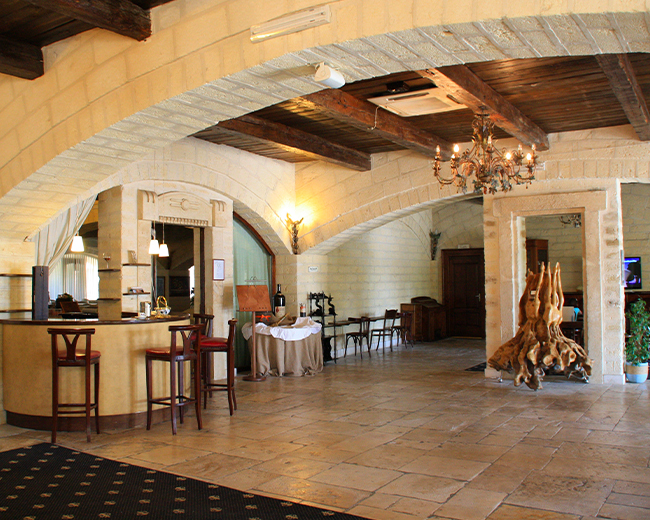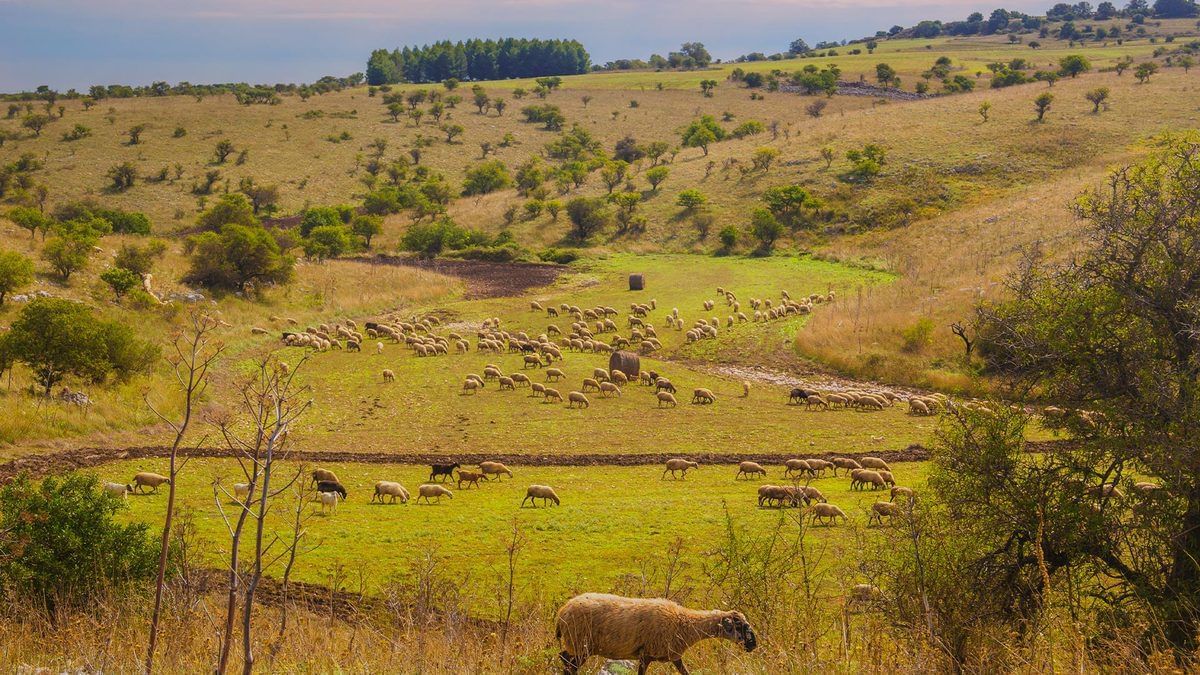Nature reserves, archaeological sites and breathtaking landscapes... Together, we discover this still-little-known corner of Puglia.
7 Oct 2020
Gruppo UNA
Say “Puglia” and people inevitably think of Salento beaches and crystal clear waters, or the Gargano coast and its series of bays, caves and coves of matchless beauty; perhaps even the unique landscape of the Itria valley, dotted with centuries-old olive trees, traditional trulli buildings and fortified farmhouses.
But between the province of Bari and Barletta-Andria-Trani is a corner of Puglia that often eludes tourists because it is still somewhat off the radar. This is a land of wandering shepherds, remote farmhouse-owners processing milk and wool and growing cereals, almonds and vines, and a millenary past of men who lived in rock caves among the stone ridges round these parts.
Welcome to the Alta Murgia, a sub-region of Apulia packed with areas of historical and cultural interest. Ready to come with us? Here’s your list of must-not-miss attractions.
The Murgia National Park.
One of Italy’s largest protected natural areas, the Murgia National Park encompasses thirteen municipalities and is characterized by limestone rocks, tufa rock, clay deposits, puli and ravines, which are the true spectacle in this area. The heart of the park is the town of Gravina di Puglia, whose very name derives from the landscape (although some people attribute the origin of the name to the words “wheat” and “wine”). It is impossible not to be struck by the charm of this jewel set in the Alta Murgia mountains. If you stay here for a few days, make sure you take in the excavations at Vagnari, a Roman village 15 km from the town of Gravina.
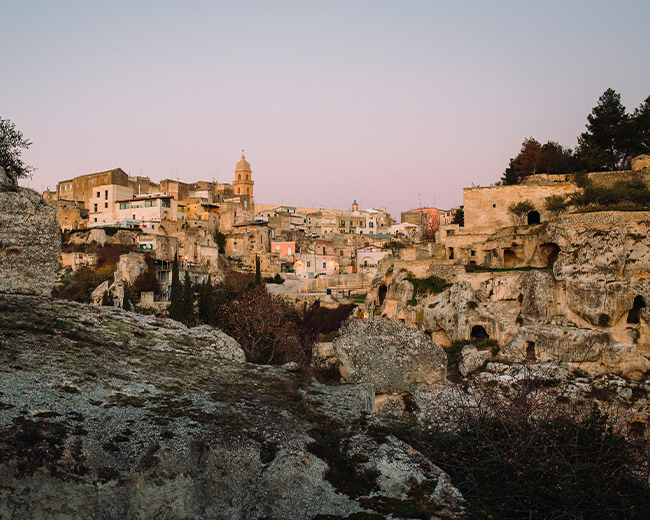
Castel del Monte.
Long acknowledged as an outstanding example of medieval architecture, Castel del Monte was built by Frederick II, even though there is still some debate about what the enlightened sovereign used it for. Its octagonal shape distinguishes it from any other castle in the world; many scholars believe it served a mainly defensive function; it also catered to the residential and representative needs of a small circle of privileged people in the king’s circle. A popular destination with tourists from all over the world, Castel del Monte is also a big attraction for creatives, who immortalize it as a location for movies and music videos.
It reopened on 1 July. Buy tickets directly online.

Altamura.
Many people know this town because of Altamura bread, local loaves made from durum wheat semolina, sourdough, salt and water. Originally, people baked this bread in communal wood-fired ovens, engraving the loaves with their initials or the distinguishing mark of each family. Altamura has a host of must-see attractions: the famous Man of Altamura, a human fossil found in the cave of Lamalunga dating back to the Neanderthal period, and the Pulo, a sinkhole of karst origin, shaped like a chasm and created by the continuous channelling of water in the area. Altamura is a compulsory stop-off on your itinerary to discover the Alta Murgia.
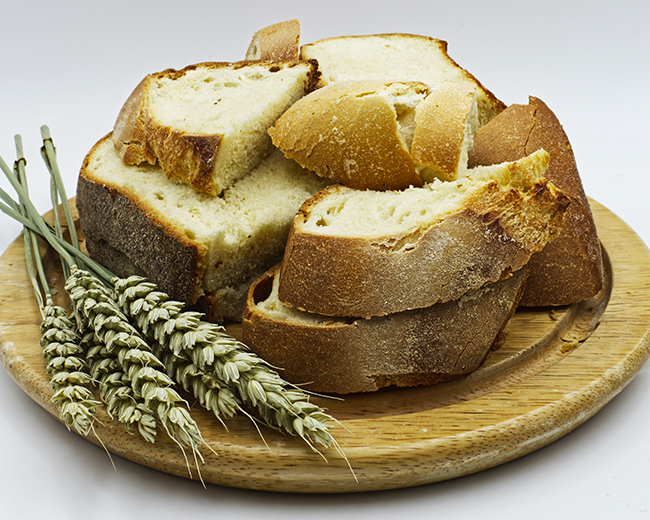
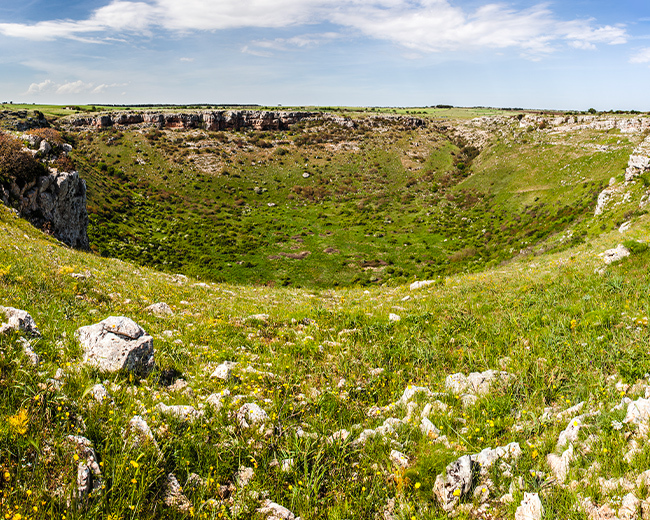
Minervino Murge.
Called the “Balcony of Puglia” because it overlooks the Murge plateau, this town is one of the finest spots to admire Murgia’s hardscrabble landscape. Minervino Murge is a labyrinth of tangled streets and tufa arches where it’s easy to get lost as you discover one of the most charming villages in the region.
When you arrive, don’t forget to pay a visit to the Grotta di San Michele: a karst cavity dug into the rock by ancient streams that dates back two million years, and more recently a place of worship dedicated to the cult of Archangel Michael.
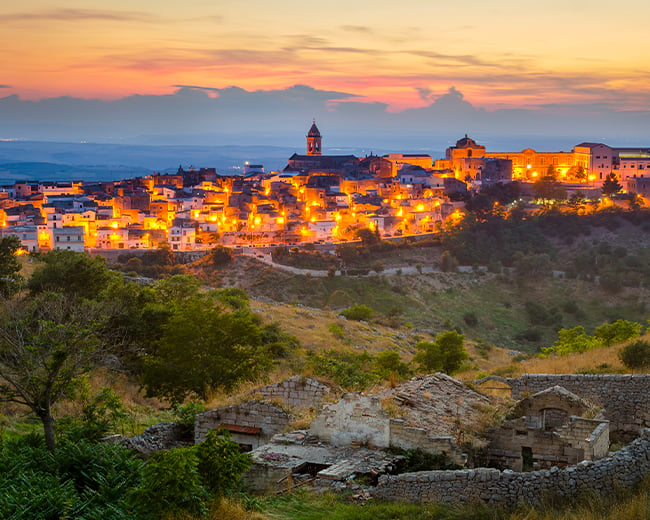
Where to stay in Puglia?
Bari is an excellent base for exploring this part of Puglia. Stay at an idyllic location with easy access to the city and its cultural riches: UNAHOTELS Regina Bari. Architecturally inspired by ancient Apulian villages, the hotel hosts the famous Noha Restaurant, serving the traditional Mediterranean and Apulian dishes in a picturesque setting, offering guests a unique, special journey through the gastronomic specialities of this beautiful region.
